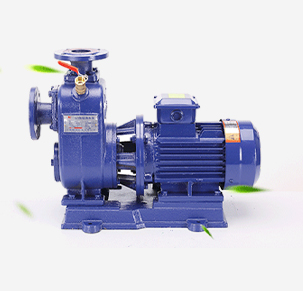Persian
- Afrikaans
- Albanian
- Amharic
- Arabic
- Armenian
- Azerbaijani
- Basque
- Belarusian
- Bengali
- Bosnian
- Bulgarian
- Catalan
- Cebuano
- Corsican
- Croatian
- Czech
- Danish
- Dutch
- English
- Esperanto
- Estonian
- Finnish
- French
- Frisian
- Galician
- Georgian
- German
- Greek
- Gujarati
- Haitian Creole
- hausa
- hawaiian
- Hebrew
- Hindi
- Miao
- Hungarian
- Icelandic
- igbo
- Indonesian
- irish
- Italian
- Japanese
- Javanese
- Kannada
- kazakh
- Khmer
- Rwandese
- Korean
- Kurdish
- Kyrgyz
- Lao
- Latin
- Latvian
- Lithuanian
- Luxembourgish
- Macedonian
- Malgashi
- Malay
- Malayalam
- Maltese
- Maori
- Marathi
- Mongolian
- Myanmar
- Nepali
- Norwegian
- Norwegian
- Occitan
- Pashto
- Persian
- Polish
- Portuguese
- Punjabi
- Romanian
- Russian
- Samoan
- Scottish Gaelic
- Serbian
- Sesotho
- Shona
- Sindhi
- Sinhala
- Slovak
- Slovenian
- Somali
- Spanish
- Sundanese
- Swahili
- Swedish
- Tagalog
- Tajik
- Tamil
- Tatar
- Telugu
- Thai
- Turkish
- Turkmen
- Ukrainian
- Urdu
- Uighur
- Uzbek
- Vietnamese
- Welsh
- Bantu
- Yiddish
- Yoruba
- Zulu
Telephone: +86 13120555503
Email: frank@cypump.com
دسامبر . 12, 2024 18:33 Back to list
umbilical slurry pump
Understanding Umbilical Slurry Pumps Essential Components of Modern Pipeline Systems
Introduction
In the world of industrial and offshore applications, the umbilical slurry pump has emerged as a critical component in the efficient transport of fluids and slurries. This article explores the design, functionality, and applications of umbilical slurry pumps, illustrating how they play a pivotal role in the management of complex pipeline systems.
What is an Umbilical Slurry Pump?
An umbilical slurry pump is a specialized device designed to transport slurries, which are mixtures of solids and liquids, through pipelines. These pumps are often integrated into umbilical systems, which are composite cables that deliver multiple services (like hydraulic fluids, chemicals, and electrical power) to offshore platforms or subsea installations. The umbilical pump's primary role is to manage the flow of these slurries efficiently, ensuring that production processes remain smooth and uninterrupted.
Design and Functionality
The design of umbilical slurry pumps is tailored to the specific demands of slurry transport, taking into consideration factors like viscosity, particulate size, and corrosive properties. These pumps typically feature robust construction, often utilizing wear-resistant materials to handle abrasive solids and harsh environments.
There are several types of umbilical slurry pumps, including centrifugal, positive displacement, and screw pumps. Centrifugal pumps are commonly used for their ability to move large volumes of liquid at a relatively low cost. In contrast, positive displacement pumps are favored for their efficiency in handling thicker slurries, providing consistent pressure and flow regardless of the slurry's viscosity.
One of the key components of umbilical slurry pumps is the suction and discharge system, which is designed to minimize wear while maximizing efficiency
. Advanced sealing technologies are also employed to prevent leaks and protect the pump's internal mechanisms from slurry abrasion and corrosion.umbilical slurry pump

Applications
Umbilical slurry pumps find extensive applications across various industries, particularly in oil and gas, mining, and waste management. In offshore oil drilling, these pumps are crucial for transporting drilling mud, which helps to lubricate and cool the drill bit while stabilizing the wellbore. The efficient handling of drilling mud is vital for maintaining operational safety and reducing operational costs.
In the mining sector, umbilical slurry pumps are used to transfer slurry from the mining site to processing facilities. These pumps must manage high solids concentrations and the potential for varying particle sizes, making their robust design essential for operational reliability.
Waste management is another area where these pumps prove beneficial. They can transport sludges and slurries from wastewater treatment plants to recycling or disposal sites. Their ability to handle varying flow rates and solid concentrations makes them invaluable in maintaining efficient waste management processes.
Challenges and Future Trends
Despite their effectiveness, umbilical slurry pumps face challenges such as wear and tear due to the abrasive nature of slurries, energy consumption, and the need for regular maintenance. Innovations in materials science and pump technology are addressing these issues, leading to the development of more durable and energy-efficient designs.
Looking ahead, the integration of smart technologies and automation in umbilical slurry pumps is set to revolutionize their operation. Sensors can monitor flow rates, pressure, and pump health in real-time, allowing for proactive maintenance and optimized performance. Furthermore, the increasing focus on sustainability will drive the development of pumps that minimize energy consumption and reduce environmental impact.
Conclusion
Umbilical slurry pumps are indispensable tools in the transportation of slurries in various industrial applications. Their robust design, coupled with advancements in technology, ensures they can meet the demanding needs of modern pipeline systems. As industries continue to evolve, so too will the capabilities of umbilical slurry pumps, solidifying their role in the future of industrial fluid transport.
-
ISG Series Pipeline Pump - Chi Yuan Pumps | Energy Efficiency&Compact Design
NewsAug.03,2025
-
ISG Series Vertical Pipeline Pump - Chi Yuan Pumps Co., LTD.|High Efficiency, Low Noise, Durable
NewsAug.02,2025
-
ISG Series Vertical Pipeline Pump - Chi Yuan Pumps | High Efficiency, Low Noise
NewsAug.02,2025
-
ISG Series Vertical Pipeline Pump- Chi Yuan Pumps Co., LTD.|High Efficiency&Compact Design
NewsAug.02,2025
-
Heavy-Duty Mining Sludge Pumps - Wear-Resistant Slurry Handling
NewsAug.02,2025
-
Horizontal Split Case Pump with GPT-4 Turbo | High Efficiency
NewsAug.01,2025










